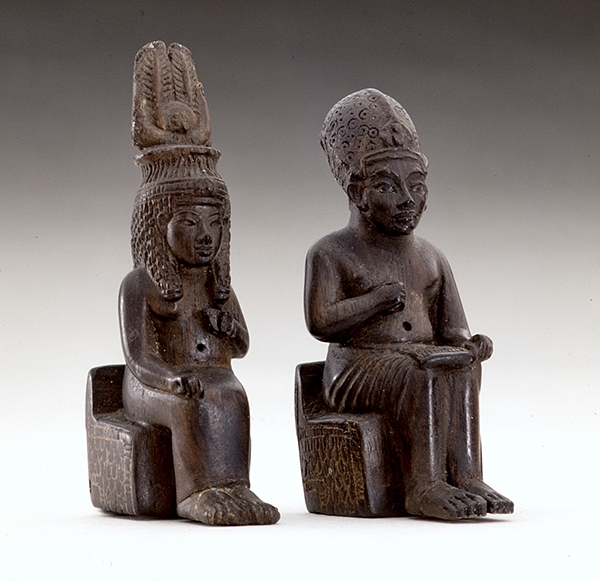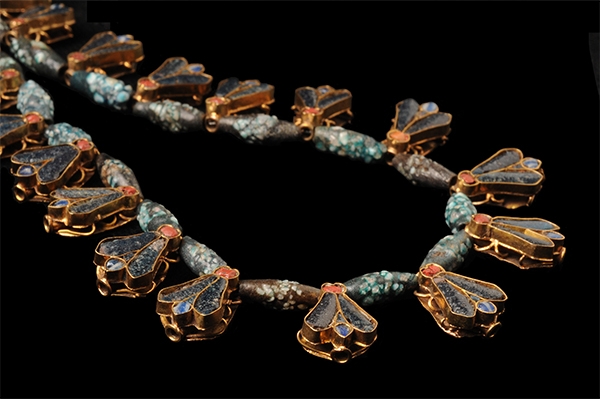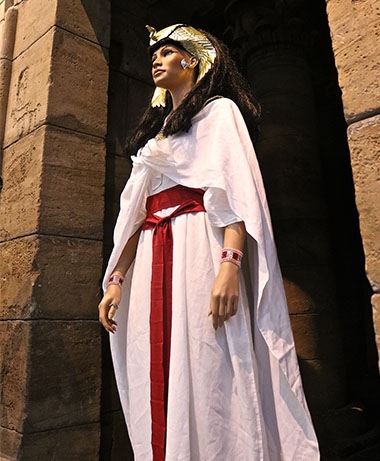
Exhibition shows luxury and power of Egyptian queens
The Queens of the Nile exhibition at the National Museum of Antiquities finally affords the wives of the pharoahs the attention they deserve. Thanks to guest curator Olaf Kaper, students and PhD candidates gained valuable experience in museum curating.
History and life at court
Like a child in a sweetshop. That's how Kaper felt over the past year as he strolled around the world's most prominent museums on Egypt. Kaper, an egyptologist at Leiden University, was given carte blanche by Leiden's National Museum of Antiquities to come up with a concept for an exhibition on ancient Egypt. The exhibition had to complement the existing collection, which can be seen from 18 November in a completely new setting at the museum. Why did Kaper opt for 'Queens of the Nile'? 'Too little attention has been paid to the wives of the pharoahs, both in science and in the museum world. I wanted to tell their history and show different aspects of life at court.'

Divine status
The exhibition covers a period of some 500 years (1539-1077 BC) and focuses on the five queens of the New Empire: Ahmose Nefertari, Hatsepshut, Tiye, Nefertiti and Nefertari. These women had great political influence and were accorded divine status, Kaper explains. They surrounded themselves with luxury and that's abundantly clear. The exhibition shows 350 objects, including royal portraits, statues of deities, sumptuous jewellery and valuable accessories such as mirrors set in bronze.

Murder of Ramses III
What does Kaper regard as the prize exhibits? ‘There are so many of them, but two are particularly special: the decorated granite cover of the sarcophagus of Queen Nefertari and a five-metre papyrus. This enormous document is a legal text that describes the conspiracy against and the murder of Pharoah Ramses III by a group of ladies from the harem and a number of officials. It proves that women at that time were by no means happy to accept a subordinate role.'

Students reconstruct the dress of the queens
Kaper carried out new research before the exhibition. Together with students, he reconstructed one of the outfits of the queens. 'Pharoah Tutankhamun is the only royal whose clothing has been found. There is not a single item of clothing remaining that belonged to the queens, but there are portraits and images of the women from which we were able to reconstruct their dress.' The result of their search can be seen at the exhibition that includes a mannequin wearing the outfit of a queen, including a stunning gold headdress.
Publications by PhD candidates
‘This exhibition was also an exceptional opportunity for my students and PhD candidates,' Kaper explains. His students were able to gain research experience and the results of their work can be seen in the museum. Several PhD candidates published an article on their research in the exhibition catalogue. Irene Morfini wrote an article on the artists who constructed the tombs of the kings, and Steffie van Gompel and Petra Hogenboom published on their research on the position of women in Ancient Egypt. Kaper: ‘Thanks to this exhibition, young researchers have also been given a platform. It's a great example of interaction between the worlds of the museum and academia.'
This is the first major exhibition on the queens of Egypt to be held in the Netherlands. The exhibition will run from 18 November to 17 April 2017. Most of the artefacts are from the Museo Egizio in Turin, the world's second largest museum on Egypt.
